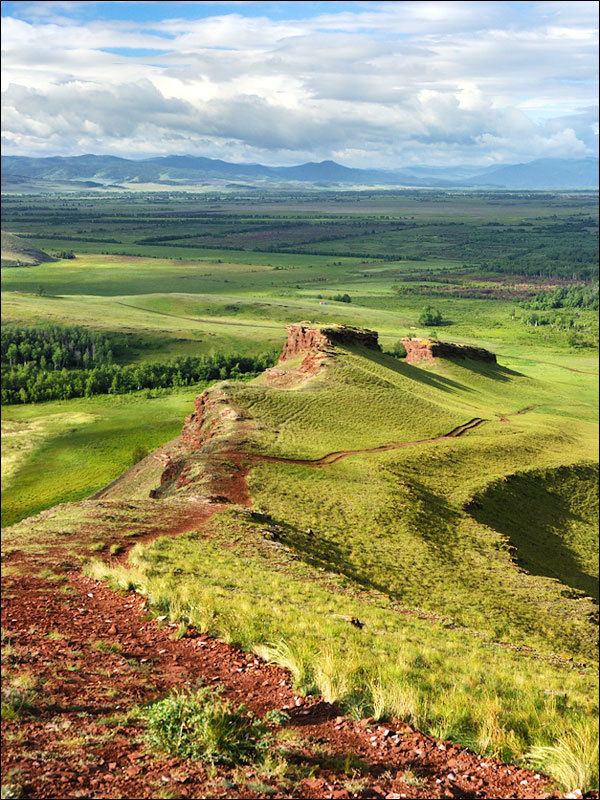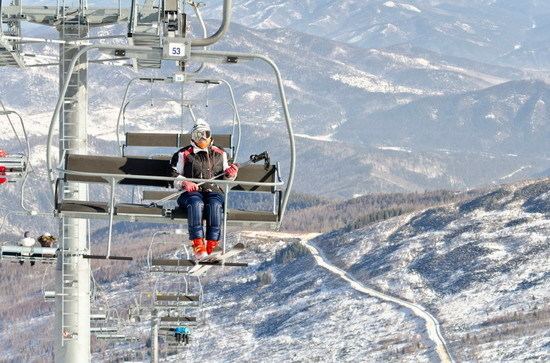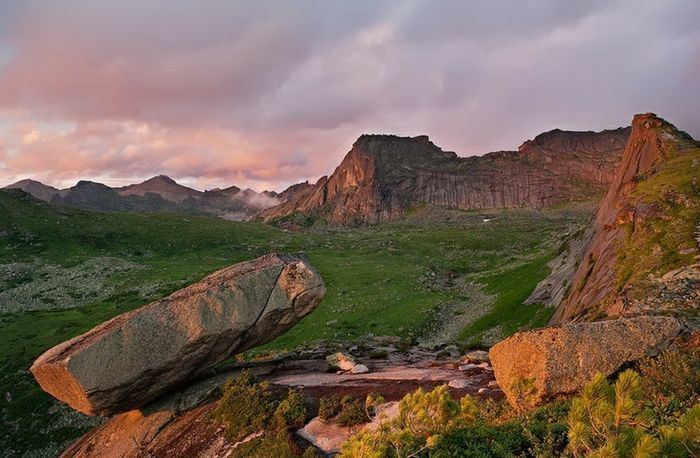Country Area 61,900 km2 Founded July 3, 1991 | Language spoken Official website Capital | |
 | ||
Map of Khakassia
The Republic of Khakassia (Russian: Респу́блика Хака́сия, Respublika Khakasiya; Khakas: Хакас Республиказы, Hakas Respublikazı) or Khakasiya (Хака́сия) is a federal subject of Russia (a republic). Its capital city is Abakan, which is also the largest city in the republic. As of the 2010 Census, the republic's population was 532,403.
Contents
- Map of Khakassia
- Siberia khakassia republic and abakan city
- Geography
- History
- Demographics
- Vital statistics
- Ethnic groups
- Religion
- Economy
- Sports
- References

Siberia khakassia republic and abakan city
Geography

The republic is located in the southwestern part of Eastern Siberia and borders Krasnoyarsk Krai in the north and east, the Tuva Republic in the southeast and south, the Altai Republic in the south and southwest, and Kemerovo Oblast in the west and northwest. It stretches for 460 kilometers (290 mi) from north to south and for 200 kilometers (120 mi) from east to west. Mountains (eastern slopes of Kuznetsk Alatau and the Abakan Range) cover two thirds of the republic's territory and serve as the natural boundaries of the republic. The remaining territory is flat, with the Minusinsk Hollow being the most prominent feature. The Yenisei is the largest river in the republic. Other significant rivers include the Abakan, the Tom, and the Chulym. There are over three hundred lakes in the republic, both salt- and fresh-water. Climate is continental, with the average annual temperature of 0 °C (32 °F). Natural resources are abundant and include iron, gold, silver, coal, oil, and natural gas. Molybdenum deposits are the largest in Russia. Forests cover the south and the west of the republic.
History

The territory of modern Khakassia was the core of the old Yenisei Kirghiz state from the 6th century CE. In the 13th century, following a defeat by the Mongols, the majority of the Kyrgyz people migrated southwest to Central Asia to what now is Kyrgyzstan. Modern Khakas people regard themselves as the descendants of those Kyrgyz who remained in Siberia. Khakassia was incorporated into the Russian state under Peter the Great. This incorporation was confirmed in a treaty between Russia and China in 1729. As it was common to deport convicted criminals from European Russia to Siberia, forts were quickly constructed in Khakassia (1707 and 1718). Many prisoners remained even after release. Many of the indigenous Khakas people converted to the Russian Orthodox faith and gradually abandoned their nomadic way of life.
By the time of the 1917 Russian Revolution, Russians made up approximately half of the population. Under Soviet rule, autonomy was granted on October 20, 1930, when Khakas Autonomous Oblast was established. The borders of the autonomy are the same as the borders of the modern Khakas Republic.
During the 1920s and 1930s, the Soviet authorities resettled an estimated quarter of a million Russians in the region. These were followed by 10,000 Volga Germans deported in World War II. By the time of the 1959 Census, ethnic Khakas people represented little more than 10% of the population.
Until 1991, Khakas Autonomous Oblast was administratively subordinated to Krasnoyarsk Krai. In July 1991, it was elevated in status to that of a Soviet socialist republic, and in February 1992 it became the Republic of Khakassia.
Demographics
Population: 532,403 (2010 Census); 546,072 (2002 Census); 568,605 (1989 Census).
Vital statistics
Source: Russian Federal State Statistics ServiceIn 2007, the republic recorded a positive natural increase of population for the first time in many years (Although very small, less than +0.01% per year), being one of the 20 Russian regions to have a positive natural population growth rate.
TFR source 2009 - 12
Ethnic groups
According to the 2010 Russian Census, ethnic Russians make up 81.7% of the republic's population, while ethnic Khakas are only 12.1%. Other groups include ethnic Germans (1.1%), Ukrainians (1%), Tatars (0.6%), and a host of smaller groups, each accounting for less than 0.5% of the total population.
Religion
According to a 2012 survey 31.6% of the population of Khakassia adheres to the Russian Orthodox Church, 6% are unaffiliated generic Christians, 1% are Orthodox Christian believers without belonging to any church or are member of other (non-Russian) Orthodox churches. 2% of the population adheres to Slavic native faith (Rodnovery) or Khakas Tengrism and folk religion, 1% to Islam, 1% to forms of Protestantism, 0.4% to forms of Hinduism (Vedism, Krishnaism or Tantrism) and another 0.4% to Tibetan Buddhism. In addition, 38% of the population declares to be "spiritual but not religious", 16% is atheist, and 2.6% follows other religions or did not give an answer to the question.
Economy
The main industries in the republic are coal mining, ore mining and timber.
Sports
Sayany-Khakassia has been playing in the highest division of Russian bandy, the Russian Bandy Super League, for a long time, but was relegated after the 2012–13 season. Now they play in the 2nd highest division.
